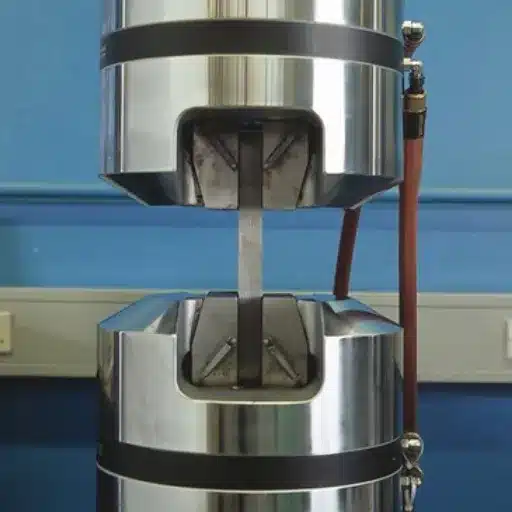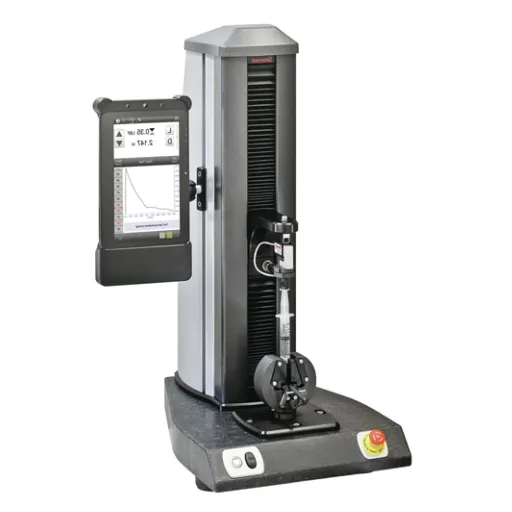From healthcare to the automotive and aerospace industries, rubber has become a fundamental material due to its unique elasticity. Caring for stretchable products and countless devices involves extensive use of rubber because its deformation under stress is vital to phenomenal performance, especially in regard to products used in Aerospace. However, understanding the innovative and optimization science behind rubber as an elastomer, its remarkable deflection properties serve as an enabler towards futuristic innovations. To inspire materials scientists and engineers, this article considers advanced measurement techniques to evaluate and enhance rubber performance while providing keen insights revolving around its elasticity.
What is Elasticity in Rubber?
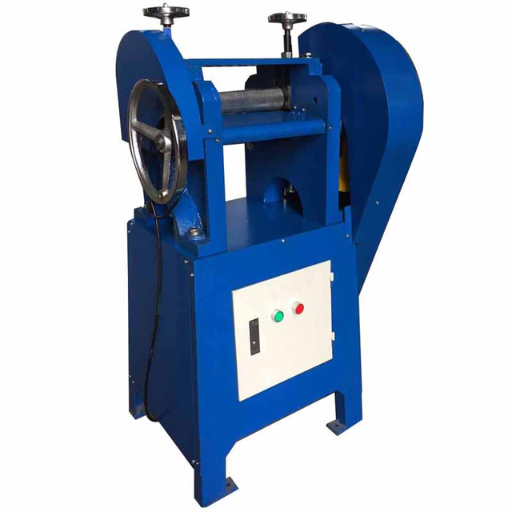
Elasticity describes the ability of rubber to regain its shape and size in the instances when rubber is stretched, compressed, or deformed. This Property arises due to long and flexible polymer chains that make up rubber’s molecular structure. When a force is applied, the chains uncoil and straighten which enables stretching of the material, and they return to their coiled configuration once the tension is released which enables restoring rubber back to its initial form. Such behavior explains rubber’s versatility in numerous purposes including tires, seals, and others.
Defining Elasticity and Its Importance
Elasticity is a mechanical property of a material that allows it to deform and recover its original shape after the stress is removed. This behavior is quantified by the material’s elastic modulus, a measure of stiffness. So, more elastic the material is, higher its elastic modulus. Stiffness is also a critical measure in understanding how a material will respond when force is applied to it. Elasticity, even if measured and assessed in terms of numbers, is essential in almost every industry. It allows the planning and manufacture of systems and devices that can absorb energy, support structural strength, and possess the ability to endure changes. For instance, in automotive engineering, the elasticity of rubber helps in providing adequate traction and endurance. Also, Civil construction relies on the elasticity of steel to withstand dynamic loads. It is the reason why components and products with better performance, reliability, resilience, and safety can be designed and engineered. These help transform ideas into reality and advance in tackling the challenges for variety of applications.
How Does Elasticity Relate to Rubber Products?
Elasticity defines an important rubber property which determines its ability to quench deformation under load and restore back to its original shape after the unloading of stress. This feature is related to the molecular configuration of rubber that mainly consists of long-chain flexible polymers. For example, natural rubber is highly elastic as it can stretch beyond 800-1,000% of its length before fracture. Other types of synthetic rubber such as styrene-butadiene rubber (SBR) or nitrile rubber (NBR) are also synthesized to serve particular industrial purposes but still retain some elasticity. Such materials find use in a wide variety of products from automotive tires where elasticity provides durability and resistance to impacts to seals and gaskets that need precise elasticity in their fit to hold tight under varying temperatures and pressures. It is still industrial challenge to improve the elasticity of rubber materials which directly relates to their multifunctionality and effectiveness.
Understanding Elastic Properties in Rubber Materials
Ruber materials elasticity properties largely depend on the molecular configuration and the cross-linking density of the structure in the polymer matrix. Take natural rubber as an example, it shows a very good level of elasticity because of its long molecular chains and the fact that they tend to uncoil and return to their original shape when not under stressed. Styrene-butadiene rubber (SBR) and nitrile rubber (NBR) synthetic rubbers are formulated with specific compositions and cross-linking for targeted elasticity and performance attributes tailored to fulfill their intended purpose.
Elastic properties of rubber material are viscoelastic temperature sensitive. At high temperature, rubber substances may enter a viscoelastic stage where some resilience is lost alongside a transition to more fluid-like consistency. On the other hand, low temperature rubber cold-brittles, drastically loses flexibility, increasing rigidity and decreasing elasticity. The storage and loss moduli of the material under varying thermal and mechanical conditions dynamic mechanical measures these viscoelastic behaviors in relation to temperature(DMA).
How Do You Measure the Elasticity of Rubber?
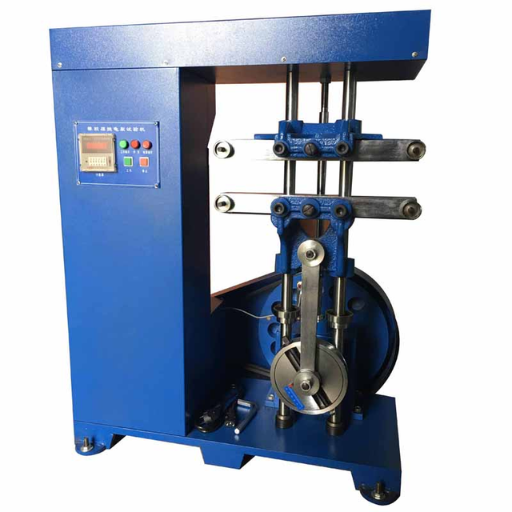
Rubber elasticity is primarily evaluated by conducting stress-strain tests. Such tests calculate several elastomer characteristics such as tensile strength, elongation at break, and modulus of elasticity. Measurements also help assess how rubber responds to compressive and stretching forces with the help of UTMs. These machines are renowned for their accuracy in capturing repeatable data with rubber samples. During testing, controlled forces (stress) are applied to the rubber sample.
Overview of Tensile Testing Methods
Tensile tests follow standard protocols that allow results to be generated at any time and from any material and still be relevant. A typical workflow for these procedures includes the generation of a specific test sample, which is standardised in dimensions, formed into dog bones or strips. Such shapes guarantee a uniform application of force to the structure while eliminating non-uniform load application. The universal testing machines utilize specialized grips which hold diverse materials in a uniform manner, while the grips themselves need to be calibrated accurately to ensure precision.
An increase in length can be applied under the control of a machine and at a constant rate for plastics using ASTM D638 or D412 for elastomers. During this process, stress (force applied per unit area) and strain (deformation) are measured using accurate sensors and extensometers. A stress-strain curve alongside key data points such as the yield strength, ultimate tensile strength (UTS), and the elastic modulus are calculated and generated from the graph.
For more precise analysis, strain measurement can be improved with extensometers or DIC systems for materials that deform in intricate ways. Also, some environmental control chambers mounted on UTMs can create extreme hot and cold temperatures or high and low humidity levels to study the effects of external conditions on the performance of the material.
Using a Testing Machine for Accurate Measurements
Following UTM guidelines precisely step-by-step is required to obtain accurate results with a universal testing machine. In the case of a UTM, its load cell, displacement measuring devices, and extensometers require proper flow of reference standards for their calibration. During the preparation of specimens, care is needed as the sample may get reproducibly misplaced or rough surfaces might result in interference error. To eliminate slippage and local stress in pre stressed areas, proper gripping fixtures must be used.
For advanced and utmost accuracy, non-contact laser extensometers can be employed to capture strains in dynamic or high-speed testing. Focused mechanics such as temperature or relative moisture require constant control as even the slightest change can affect material properties for testing. Multi-axis load cells with composite materials or anisotropic specimens enable simultaneous multi-directional measurement of force and deformation, while advanced software gives complete analysis, requiring lower level post-shoot analytics for determination of truth from noise. Therefore controlling measurement errors when dealing with unwanted signals such as noise, makes the final measurement which has passed through all these stages extremely believable.
What Factors Affect the Elasticity of Rubber?

The parameters mentioned above play a major role in the determination of elasticity in rubber materials.
- Temperature: Higher increase in temperature will boost molecular movement and agility while reducing it will increase odds of inflexibility leading to brittleness.
- Cross-Linking: The amount of cross-linking affects a rubber’s elastic properties. More rigid cross-links makes it more stiff, while less cross-linking permits greater flexibility.
- Stress and Strain: Overstretching or holding a stretch for too long can result in relaxation or permanent reduction of stress, hence losing elasticity over time.
- Aging and Degradation: Environmental exposure to ultraviolet radiation, oxygen, and ozone can reduce the elasticity of rubber.
- Material Composition: Elastomers filled with other components known as fillers and plasticizers modify the rubber’s elasticity by changing its molecular structure.
All these factors must be understood and controlled to maintain the uniform performance of rubber in all its uses.
The Role of Polymer Chain Structure
The mechanical attributes of a rubber material such as its resilience and elasticity, rely considerably upon its polymer chain structure. Rubber is composed of long polymer chains, either natural or synthetic, whose arrangement impacts the stretch and recovery phenomena. Linear polymer chains behave elastically quite differently from either branched or cross-linked chains. Void spaces are filled during vulcanization where cross-links is formed through covalent bonds between polymer chains. This enhances the elasticity, tensile strength, and thermal stability of the material.
Moreover, the molecular weight of the polymer affects the movement of the chain and hence its elasticity. Polymers of high molecular weight often show more entangled structure, which favors the elastically reversible deformation under stress. Degree of crystallinity is also key: amorphous regions tend to be flexible, while crystalline ones provide strength. These features have to be tailored and tightly controlled during material synthesis to fulfill targeted performance criteria for automotive tires, seals, or industrial gaskets.
Influence of Cross-Linking on Rubber Elasticity
Cross-linking is one of the most basic steps undertaken in rubber technology since it determines the elasticity and physical properties of elastomers. Cross-links are bonds along polymer chains which are covalent in nature that limit the free movement of the chains which withstands stress and at the same time provides strength. The extent of cross-linking affects the elastic modulus and elongation at break. For instance, low cross-link density leads to increased flexibility and stretching; while high cross-link density leads to increased hardness and decreased deformability.
What is the Modulus of Elasticity in Rubber?
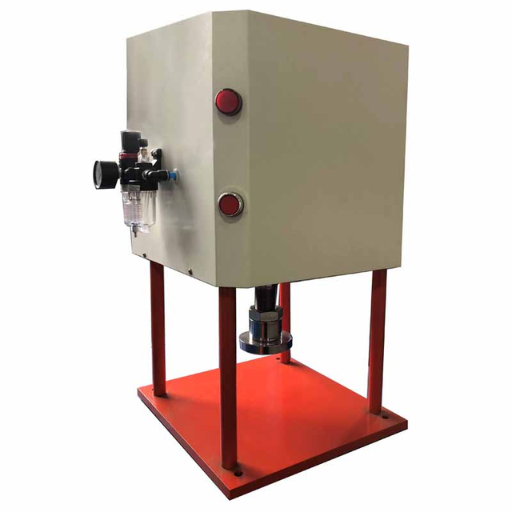
The modulus of elasticity for rubber, often termed as Young’s Modulus, measures rubber’s stiffness. It is described as the ratio between stress (force per unit area) and strain (change in dimension compared to the original length) within the rubber’s elastic range of deformation. Depending on the temperature, strain rate, rubber composition, and other flexible factors, the modulus for rubber increases comparatively under heat as its molecular bonds are weakened. While classified under this general umbrella, rubber does possess a far more flexible molecular structure than metals. Its value is measured in pascals (Pa) or megapascals (MPa).
Defining Modulus of Elasticity and Its Relevance
Change in temperature can greatly influence a material’s modulus of elasticity but isn’t the sole component at play. All materials have a limit within which the response dictates the degree of change exerted on the material. Mid reaction, when heated, the elastic modulus tends to lessen owing to weakened intermolecular forces.
The strain rate, referring to how quickly a material is deformed, is also important. Strain rate increases lead to, at least temporarily, an increase in modulus due to greater opposition to deformation under rapid loading. This is especially common with viscoelastic materials like rubber.
Elasticity is impacted by the composition and microstructure of a material. In metals, grain size, alloying elements, and phase distribution lead to differing values of modulus. Also, in rubber compounds, some fillers and cross-linking agents change elasticity considerably as they strengthen the molecular framework.
Comparing Natural Rubber and Synthetic Elastomers
|
Parameter |
Natural Rubber |
Synthetic Elastomers |
|---|---|---|
|
Source |
Harvested from rubber trees |
Petrochemical-based |
|
Elasticity |
High natural elasticity |
Varies by type (e.g., SBR, NBR) |
|
Temperature Resistance |
Limited tolerance to high temperatures |
Better high-temperature performance |
|
Chemical Resistance |
Limited resistance to oils and solvents |
Superior resistance to oils and solvents |
|
Durability |
More susceptible to aging and weathering |
Improved aging resistance |
|
Processing Requirements |
Requires careful natural processing |
Generally easier to process |
|
Cost |
Typically lower in raw form |
Can be costlier due to synthesis |
|
Environmental Impact |
Renewable but deforestation concerns |
Non-renewable, higher carbon footprint |
|
Applications |
Tires, gloves, gaskets |
Automotive parts, industrial seals |
|
Tensile Strength |
Generally higher |
Depends on elastomer type |
How to Determine Tensile Strength of Rubber?
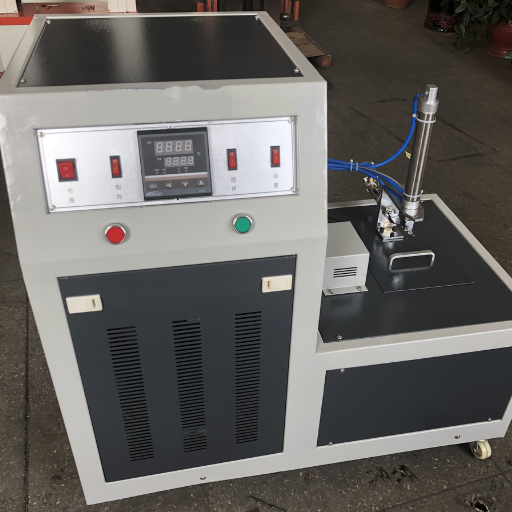
The rubber sample’s tensile strength is evaluated using a tensile test on a rubber specimen. Breaking the specimen will require a specific amount of force to be applied, with the rubber specimen placed in a specific machine that will apply this force. The steps followed to conduct this test are as follows:
- Prepare the Sample: For each sample, with reference to ASTM D412 and ISO 37 standard, the rubber shall be cut to a specific form and shape which is dumbbell in form.
- Mount the Sample: Make sure that the test sample is placed correctly in the grips of the tensile testing machine so that the accuracy of the results will not be affected by some misalignment.
- Apply the Force: Perform stretching of the specimen making use of the machine’s capabilities, but this has to be real time measurement using a precise measurement device for elongation.
- Record the Data: Take note of the maximum force measured with appropriate gauges that the sample was able to withstand at failure. This results to a calculable value of tensile strength once the average of the cross section area of the sample is divided from the value reached prior to breakage.
This value can be described as the rubber’s resistance to breakage under strain while being pulled apart. For accuracy, industry standards need to calibrated before conducting measurements to ensure optimal accuracy.
Factors Influencing Tensile Strength in Different Rubber Specimens
Proper rubber specimen performance and reproducibility requires a clear understanding of its tensile strength attributes. These parameters are influenced by several interrelated variables as discussed in detail below:
- Polymer Type and Composition
Different polymers impact tensile strength differently. Take for example natural rubber (NR) and its synthetic counterparts like styrene-butadiene rubber (SBR) – NR has more tensile strength because of better elasticity and molecular architecture. Furthermore, it is possible to blend different polymers to achieve the desired mechanical properties/strength for a specific task.
- Vulcanization Process
Type and degree of vulcanization impacts a specimen’s tensile strength too. Take sulfur vulcanization as an example; it supports polymer chains to form a cross-link structure which helps improve elasticity and the strength of the material. Over-vulcanization or under-vulcanization can cause improper cross-link density which in turn leads to poor tensile properties.
- Fillers and Additives
Fillers like carbon black or silica which are known to improve tensile strength also serve to reinforce the polymer matrix. The effivciency with which these fillers reinforce has a direct correlation with type, particle size, and dispersion quality of the fillers. For example, N330 has smaller carbon black particles which increases its ability to reinforce which enhances tensile properties.
- Temperature and Testing Conditions
Tensile tests done at different temperatures show that in many instances, tensile strength becomes weaker with excessive thermal exposure. In one example, rubber specimens tested at 150°C showed a reduction in tensile strength by roughly 30% relative to those tested at room temperature. The rate of strain during the test also matters; higher strain rates tend to result in greater apparent tensile strength.
Applications of Tensile Testing in Industry
Over the years, across different disciplines, tensile testing has become a significant source of information regarding a given material’s specific mechanical properties since it allows the evaluation of the material under a uniaxial tensile load. In the subsequent sections, we discuss some of the most popular applications and their key data highlighted:
- Material Selection and Quality Control
Tensile testing is performed quite commonly during selection of the material so that the tested material will functions as the right fit for the application. Take for instance the aerospace industry where materials with high tensile strength, such as titanium alloys, are tested to ensure they are capable of withstanding forces as high as 1,200 MPa. This evaluation is critical to ensure the structural integrity of the aircraft is maintained during flight. Likewise, manufacturers perform routine tensile tests on material batches to screen for defects or inconsistencies. This helps ensure product reliability.
- Automotive Component Design
Automotive engineers use tensile testing to refine the mechanical properties of chassis, suspensions, and even fasteners. For example, advanced high-strength steels (AHSS) are put through tests to enable a tensile strength of more than 1000 MPa so that the tests done for safety and performance requirements pass while reducing weight to enhance fuel efficiency. These materials undergo standard tests in all cyclic loading scenarios for reliability and consistency over time.
- Construction and Infrastructure
Tensile testing is indispensable in evaluating the strength of construction materials like concrete, rebar, and structural steel. Reinforcement bars, for instance, are often tested to achieve yield strengths of 500–600 MPa, ensuring their capability to support heavy loads in bridges and high-rise buildings. The results also guide compliance with international codes such as ASTM A615.
- Polymer and Plastics Industry
The tensile tests performed during the manufacturing of polymers focus on the elongation at break, tensile modulus, and the failure behavior. Primarily, polypropylene films for industrial packaging have to pass showing elongation between 200% and 600% so they are flexible and able to take stress mechanically. Such properties are extremely important to the consumers, therefore, precise values are needed to fulfill expectations.
What Are the Applications of Rubber Elasticity?
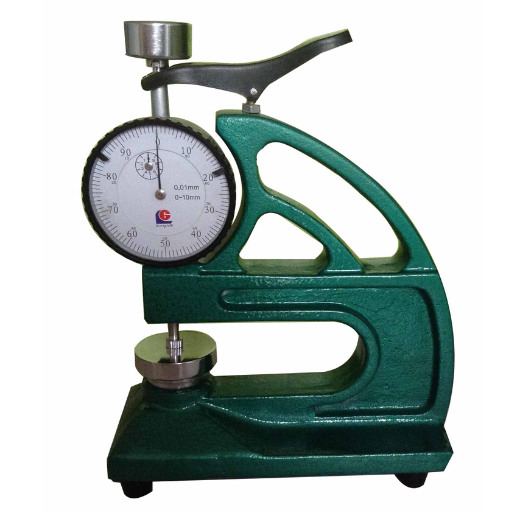
Applications that require rubber elasticity span across multiple disciplines because it is able to endure stress and return to its original configuration. Tires and seals for automotive machinery, gloves and tubing used in medical equipment, as well as footwear and elastic bands ,are all examples of consumer products that exhibit rubber elasticity. Furthermore, industrial machines also need rubber elasticity to flex and absorb vibrations. All of these applications depend on the stretchable and highly resilient rubber materials.
Use of Stretched Rubber in Everyday Products
Because of developments in manufacturing methods and engineering, the use of stretched rubber in daily items has increased significantly. Innovations in both synthetic and natural rubbers have heightened their performance capabilities, resulting in more specialized functions across various sectors. For example, in sportswear, elastic rubbers sharpen ease and movement capability, enhancing the performance of athletic apparel, compression garments, and running shoes. Also, modern hypoallergenic rubber technologies have balance safety with high tensile strength, low allergic potential, and high durability making these compounds ideal for modern surgical gloves and catheter tubing.
The automotive sector also makes use of high-performance rubber in vital parts such as gaskets and even integrates them on rubbers like timing belts. These products are specially manufactured to sustain severe mechanical loads, temperature shifts, and chemical attacks without any damage. Other studies have also focused on sustainable rubbers like guayule and dandelion-derived rubbers to solve environmental issues that the traditional rubbers are associated with. These changes guarantee the performance and reliability of stretched rubber products while reducing the environmental impacts.
Impact of Elasticity on Rubber Band Performance
For various applications, elasticity determines rubber bands performance and appropriateness significantly. The most notable elasticity determining factor is the elastic modulus which measures how a material can regain its shape after deforming. Rubber bands are specifically made to have high elasticity to enable stretching without breaking. A combination of the polymer makeup, cross-link density, and molecular orientation influence the band’s elasticity and fatigue strength.
Research shows that balanced elasticity improves the efficiency of rubber bands to evenly allocate tension across bound objects while refraining from snapping due to stress. However, over-stretching rubber bands can lead to a crack. This means that stretching rubber bands requires them to be made from well-formulated material. Extreme temperatures also affect elasticity. Insulating rubber bands at high temperatures enables stretching but reduces tensile strength. Manufacturers increase stretching resistance by altering material configuration and applying specific temperatures during the manufacturing. This ensures the rubber bands will be as effective in diverse conditions and also enhances flexibility.
Reference Sources
-
Rubber Elasticity Overview: Tensile testing, dynamic mechanical analysis (DMA), and compression tests are commonly used to measure rubber elasticity.
-
Tensile Testing for Elasticity Analysis: Tensile testing machines stretch rubber samples to their breaking point, measuring tensile strength, yield strength, and elongation at break.
-
3D Observations in Rubber Elasticity: Using X-ray tomography, researchers discovered that rubber exhibits local volume changes during deformation, challenging traditional models of rubber elasticity.
- Top Rubber Testing Equipment in China
Frequently Asked Questions (FAQs)
Q: What is the elasticity theory in relation to rubber?
A: The elasticity theory explains how rubber can return to its original shape after being deformed. This property of rubber elasticity is the ability to deform under stress and recover when the force is removed.
Q: How does the amount of stretch affect the mechanical properties of rubber?
A: The amount of stretch applied to a piece of rubber determines its mechanical properties, including its stiffness. When stretching a rubber sample, it is important to remain within the elastic region to ensure it can return to its original shape.
Q: What is Hooke’s Law and how does it apply to rubber elasticity?
A: Hooke’s Law states that the force required to stretch a material is proportional to the amount of stretch, provided the material remains within its elastic region. For rubber, this means that the relationship between stress and strain is linear until a certain limit is reached.
Q: What happens when rubber is stretched beyond its elastic region?
A: When rubber is stretched beyond its elastic region, it enters the plastic region, where it may not return to its original shape. This is often associated with reduced elasticity and permanent deformation of the rubber material.
Q: What factors influence the stiffness of rubber?
A: The stiffness of rubber is influenced by its composition, including the level of crosslinks in the material, which affects how much force is required to stretch it. High modulus rubber tends to be stiffer and less elastic compared to soft rubber.
Q: How can I calculate the elastic properties of rubber?
A: To calculate the elastic properties of rubber, one can use stress vs strain graphs to determine the slope in the elastic region, which gives the modulus of elasticity. This measurement helps in evaluating how the rubber behaves under different mechanical stresses.
Q: What are some common applications of rubber that utilize its elasticity?
A: Rubber is commonly used in various applications like rubber seals and rubber mounts, which rely on its ability to return to its original shape after deformation. This elasticity ensures effective sealing and shock absorption in mechanical systems.
Q: How does temperature affect the elasticity of rubber?
A: Temperature can significantly affect rubber elasticity. As temperature increases, rubber generally becomes softer and more elastic, allowing for greater deformation without permanent damage. Conversely, at lower temperatures, rubber may exhibit reduced elasticity and increased brittleness.
Q: What role do crosslinks play in the elasticity of rubber?
A: Crosslinks in rubber serve to enhance its elasticity by creating a network that allows the material to return to its original shape after deformation. The density and arrangement of these crosslinks can significantly impact the overall mechanical properties of rubber.
Q: Can rubber experience fatigue under repeated stress?
A: Yes, rubber can experience fatigue under repeated mechanical stress. With continuous stretching and relaxing, the material may develop micro-cracks, leading to a loss of elasticity and potential failure over time.





